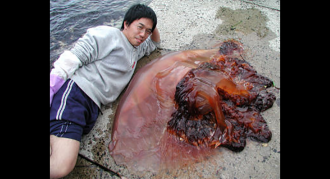All Stories
-

-
 Environment
EnvironmentPolar ice feels the heat
This is the first of a two-part series on global climate change.
-
 Health & Medicine
Health & MedicineGut microbes and weight
A new report links a baby's gut microbes with the chance that the baby will become an overweight child.
-
 Earth
EarthSalty, old and, perhaps, a sign of early life
Exploring salt deposits, researchers unearthed the planet's oldest-known, complete molecules thought to have been made by living things.
-
 Animals
AnimalsBlooming jellies
Jellyfish and other gooey marine creatures are showing up in new places, and scientists are trying to discover why.
-
 Health & Medicine
Health & MedicineFoul play?
Genetic differences may affect the results of tests given to athletes to see if they have been taking performance-enhancing drugs.
By Susan Gaidos -
 Chemistry
ChemistrySugary survival skill
Scientists have discovered the trick that an African fly uses to survive dry times.
By Susan Gaidos -
 Physics
PhysicsExplainer: Understanding light and electromagnetic radiation
Here's a simple guide to the different types of electromagnetic energy that move as waves.
By Janet Raloff -
 Tech
TechUndercover detectives
T-rays are digitally uncovering everything including potential terrorists, buried images on church walls, and subsurface flaws in the foam used to protect space shuttles.
-
 Health & Medicine
Health & MedicineRecipe for health
Obesity is on the rise, but there are plenty of things you can do to maintain a healthy weight.
By Emily Sohn -
 Health & Medicine
Health & MedicineBlood goes stale—and fairly quickly
Doctors have long thought it safe to store donated blood for up to 42 days, but some patients do better when the blood they receive is fewer than 14 days old.
-
 Animals
AnimalsListening to birdsong
Among certain finches, a lady bird knows when a gentleman bird is sending subtle messages in his calls—ones that people can't detect.